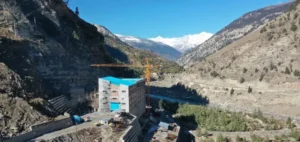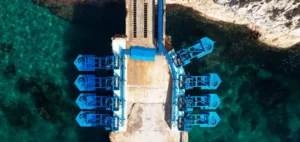Julius Nyerere, in Tanzania, is a dam that is being filled for a 2115MW hydroelectric plant.
Little solar energy
Julius Nyerere would cost about $3 billion. The Julius Nyerere hydropower plant will increase Tanzania’s installed capacity to about 3700MW. In addition, the site will provide a boost to the economic growth of a country of approximately 63 million people.
Tanzania currently has an installed capacity of about 1600MW. 48% of this capacity comes from natural gas, 31% from hydroelectricity, and the remainder comes mainly from other fossil fuels. In addition, the contribution of solar energy is always less than 1%.
The development of a strong power pool in East Africa will also be essential. Indeed, Tanzania could tap into the wind power potential of Ethiopia and Kenya. In addition, the country can also support wind from Kenya and Ethiopia as needed.
The risk of drought
Once fully operational, hydropower will account for the majority of Tanzania’s installed capacity. In addition to Julius Nyerere, some smaller hydropower plants will add about 600MW. Thus, hydropower alone will eventually contribute more than 3000MW to Tanzania’s energy mix. The country should also diversify its energy mix to ensure growth and increase its energy security.
Recently, Tanzania was carrying out load shedding due to low water levels around its hydroelectric plants. This decision was a result of the drought that is ravaging the East African region. Zimbabwe and Zambia also introduced load shedding due to low water levels caused by drought.
The cumulative rainfall deficit over the past 24 months is severe over large areas of East Africa. For example, the driest regions are central and southern Somalia, southeastern Ethiopia, and eastern Kenya. Thus, the values are up to about 50% deficit.






















